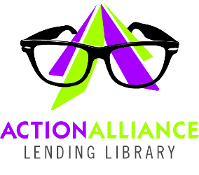Resources Library: Multidisciplinary
Start a Search:
Tribal Implementation of VAWA
This page from the National Congress of American Indians helps to briefly review the application of VAWA as it relates to Tribal communities. Their intent is to push for more inclusion of tribe rights and power to enforce legal and community action towards those who are not included in the VAWA understanding of sexual violence. Current law only allows for tribes to act to address domestic violence towards women only, and limits the ability to prosecute offenders who are not tribal members.
Trust Survivors: Building an Effective and Inclusive Cash Assistance Program

FreeFrom, a national organization, based in Los Angeles, with a mission to dismantle the nexus between intimate partner violence and financial insecurity, has created their groundbreaking report that compiles data and stories from 1,000 surviors about how to make cash assistance work for them.
The Biden-Harris Administration has pledged $5 billion to be used as direct cash assistance for survivors. At FreeFrom, they are thrilled about this promise as it is known from experience that survivors’ #1 need is cash to spend as they see fit.
To help the Biden-Harris Administration design a survivor-centered program, FreeFrom asked an incredibly diverse sample of survivors what they need and overwhelmingly, they expressed that they need a program steeped in flexibility and trust.
Some key takeaways from the data:
- 71% of survivors were not seeking support from a domestic violence or sexual assault organization when they applied for a Safety Fund grant;
- 53% of survivors report that they do not have any “proof” that they are a survivor (e.g., police report or restraining / protective order);
- 68% of survivors can’t or don’t feel safe getting a police report;
- 69% of survivors can’t or don’t feel safe getting a restraining / protective order;
- 84% of survivors would not be able to access cash assistance if they had to meet certain added eligibility requirements beyond their experience of harm.
Download the report by clicking on the file below.
Understanding PERK Exams and Your Options After a Sexual Assault

This brochure provides information and guidance for obtaining, understanding, and tracking a PERK (Physical Evidence Recovery Kit) Exam in the state of Virginia. Included in this resource are sections on receiving support and information, what a PERK exam is and how it is performed, PERK exams and reporting to law enforcement, victims’ rights and options, and more.
Understanding Protective Orders in Virginia: What you need to know

This video, “Understanding Protective Orders in Virginia: What you need to know” is a useful resource for anyone with a family abuse protective order in Virginia. This video aims to make information about protective orders more accessible to both petitioners (individuals seeking to be protected) and respondents (individuals who the protective order is filed against). It explains definitions, conditions, and Virginia law related to protective orders in plain language and is available in English (with or without captions) Spanish.
NOTE: This video was created in July 2020 and state and federal law may have changed. The video was created as a project of the Pulaski Juvenile and Domestic Relations District Court Domestic Violence Docket with funded in part by a V-STOP award #15-M4161VA14 and #20-Q4161 VA-19 awarded to the Office of the Executive Secretary of the Supreme Court of Virginia from funds authorized by the federal Violence Against Women Act awarded to Virginia by the U.S. Department of Justice. Opinions or points of view expressed do not necessarily represent those of DCJS, OES, or the U.S. Dept. of Justice.
Click here to view the video in ENGLISH.
Click here to view the video in ENGLISH with captions.
Haga clic aquí para ver el video en español.
VA, DOD study a major breakthrough for understanding PTSD
Researchers from the Department of Veterans Affairs (VA) and Department of Defense (DOD) recently released findings of a new study called Prospective Post-Traumatic Stress disorder Symptom Trajectories in Active Duty and Separated Military Personnel, which examines Post Traumatic Stress Disorder (PTSD) symptoms in Veterans, compared with active-duty populations.
This is the first known study comparing PTSD symptom trajectories of current service members with those of Veterans, and is the product of a collaborative effort from VA and DOD researchers analyzing data from the Millennium Cohort Study (MCS), the largest prospective health study of military service members.
To learn more about the study itself, click here.

